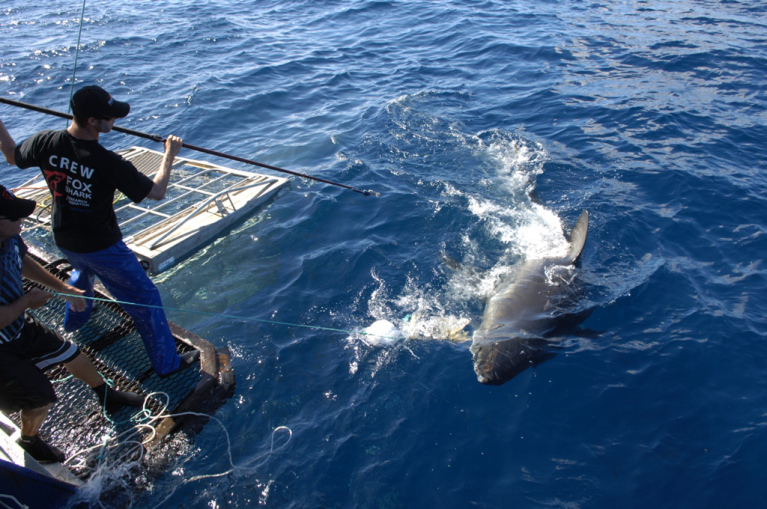
An Australian icon, Shark Bay continues to attract and inspire thousands of people each year. Tucked away on Australia’s most westerly point, it is a remote oasis within the vast red continent. The main attraction has been and still remains the bizarre behaviour of the Monkey Mia dolphins that have been voluntarily interacting with humans since the 1960s and on a more controlled basis since the 1980s. The daily feeding of wild dolphins that come into ankle deep water was, until recently, the only place in the world you could see it. But its not just the dolphins that make Shark Bay so special.
Shark Bay is a United Nations World Heritage Site
Shark Bay is a vast area covering two million hectares over 1500 km of coastline. It’s a site that has been recognised for its importance not just to Australia but to the entire human race. Since 1991 it has been one of around 180 sites worldwide that are labeled as United Nations World Heritage Sites. These are areas that have been recognised as of such universal value that their conservation concerns all people of the world. Along with Africa’s Serengeti, the Great Barrier Reef and The Galapagos it ranks as one of the planets most significant natural places. This is an area of such diversity, uniqueness and importance that researchers from all over the world have flocked to get in on Shark Bay research for the past two decades. Remarkably the famous dolphins of Monkey Mia and Shark bay don’t even figure in its World Heritage status.
Its outstanding diversity lies in most part in the isolation of its marine and terrestrial ecosystems over long time periods as well as being at the transition between tropical and temperate climate zones. Many species are at their most southerly or northerly limits here. And there is another peculiarity to Shark Bay: it is one of the few areas in the world where marine waters are twice the salinity of normal seawater. This fact alone has massive impacts on the distribution and the diversity of species here. This is an area of major importance.
Stromatolites are the Oldest Life Form on Earth
The bizarre structures called Stromatolites in Hamelin Bay pool, built by tiny microbes, are the oldest known life forms on the planet. The 3000 year old youngsters are the same as the first single celled organisms that appeared 3.5 billion years ago. These are organisms that have remained unchanged since life on earth began. The uncharismatic lumps of stone on the waters edge quietly releasing oxygen into the atmosphere as their kind have done since the beginning of life are a window on our evolutionary past. There are only two other places on the entire planet where ecological conditions are suitable for them to survive and Shark Bay is by far the finest example anywhere that they continue to thrive.
The Worlds Largest Sea Grass Meadow is Home to Marine Turtles
Beyond the Stromatolites lies the worlds largest and one of the richest sea grass meadows in the world, all 4000, sq km of it. This enormous ecosystem is home to a vast diversity of life yielding one of the highest productivities on the planet. Amongst this life is the impossible number of marine turtles that feed and live around the sea grass beds. The island and beaches of Shark Bay provide critical nesting sites for both green and loggerhead turtles, both on the world’s endangered species list. Over 6000 marine turtles use the bay and it supports the largest breeding population of loggerhead turtles in the region. Even the critically endangered leatherback uses this area as well as the threatened hawksbill turtle.
Endangered Dugong
Shark bay provides a haven for much of the world’s endangered wildlife and none as un-adapted to the modern world as the beleaguered dugong or sea cow. This gentle herbivore is now extinct through much of its range due to hunting and habitat destruction. But this oasis is home to an estimated 13% of the entire global population of dugongs. It is considered singularly the most important site for the survival of the entire species. The southern right whale, down to a dismal world population of 6000, can be seen regularly here. And tiger sharks also make an appearance as important residents in this remarkable Eden. Their numbers here are unprecedented and researchers are finding out more about the lives of tiger sharks and their place in the bay’s ecology than in any other place in the world.
Protecting Shark Bay’s Heritage
That more than 160,000 visitors make the journey annually is no surprise and despite its remoteness the word about the magic of Shark Bay continues to attract tourists and scientists alike. This area ranks as one of the planets truly most outstanding wild places and it seems the future for the area is optimistic in large part because of its profile as a World Heritage Site. The large amount of research being conducted here will continue to reveal its unique nature and will also detect changes in the areas ecology so that management can be adjusted to ensure its protection.


